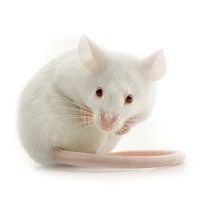Article
New York Rats: "Reservoir" of Dangerous Pathogens
Author(s):
Researchers from Columbia University's Mailman School of Public Health have published research identifying a myriad of potentially harmful pathogens carried by New York City (NYC) rats.

Researchers from Columbia University’s Mailman School of Public Health have published research identifying a myriad of potentially harmful pathogens carried by New York City (NYC) rats.
While it isn’t completely clear how rats pass on diseases to humans, lead author Cadhla Firth claimed rats’ saliva, urine, and feces consists of pathogens which pets and people can encounter. However, the way rats transmit diseases is more understood.
“Although the detection of viral RNA in saliva and excrement does not indicate the presence of intact and infectious viral particles, it does suggest the possibility that transmission of these viruses between animals may occur by inhalation, biting, or ingestion rather than strictly through blood-borne or sexual transmission,” the investigators wrote.
For their study, researchers captured 133 Norway rats from 5 locations in NYC. Researchers gave special attention to rats living in residential buildings.
By targeting molecular assays to identify bacterial, viral, and protozoan human pathogens, investigators found 15 bacterial and protozoan pathogens.
“We found that these rats are infected with bacterial pathogens known to cause acute or mild gastroenteritis in people, including atypical enteropathogenic Escherichia coli, Clostridium difficile, and Salmonella enterica, as well as infectious agents that have been associated with undifferentiated febrile illnesses, including Bartonella spp, Streptobacillus moniliformis, Leptospira interrogans, and Seoul hantavirus,” the authors reported in MBio.
Seoul hantavirus, which was present in 8 rats, was the first time the virus has been discovered in NYC, the UB statement claimed.
“We also identified a wide range of known and novel viruses from groups that contain important human pathogens, including sapoviruses, cardioviruses, kobuviruses, parechoviruses, rotaviruses, and hepaciviruses,” the writers noted.
Since investigators discovered 2 viruses related to hepatitis C in rats, researchers believe the animal could act as a model for how the disease affects humans.
“With the loss of the chimpanzee model for hepatitis C, the availability of an animal model that has fidelity to the human model is extremely important to efforts to develop drugs and vaccines,” says first author Ian Lipkin, the director of the Center for Infection and Immunity at Columbia University.
“Our findings indicate that urban rats are reservoirs for a vast diversity of microbes that may affect human health and indicate a need for increased surveillance and awareness of the disease risks associated with urban rodent infestation,” the authors recommended.



